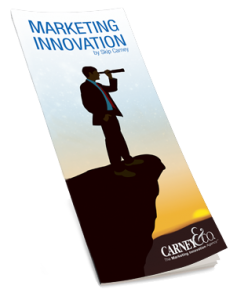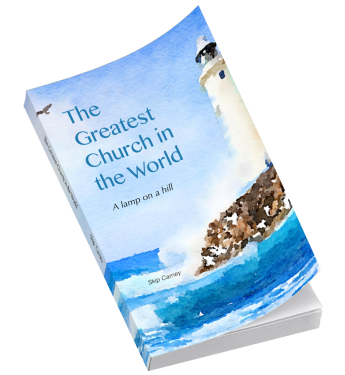Our Blog
In early December, we held the first book signing for “The Greatest Church in the World” a book that has been an idea in my head for a couple of years. Now, the idea is tangible and shareable.
I thoroughly enjoyed discussing the book and signing 34 copies. But the deeper reward was sharing the book’s message with members of the local community.
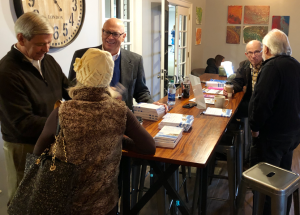
About the Book
“The Greatest Church in the World” is the parable of a young pastor who has failed at two churches and is ready to quit the ministry. Three hundred and forty-seven miles from home, he turns in to a small town. There, he meets a pastor and a community that teach him the principles of church success.
He learns these principles from different members of the community – the mayor, a young married couple, the pastor. Community is an integral theme in the book, and it is also proving integral to the book’s success.
How does a new author launch his passion project? He lays the foundation in his community first.
The Grassroots Level
I wanted the book to impact as many hearts and churches as possible at its initial launch. The ReNew18 Pastors Conference proved the perfect event to do just that.
Sharing this book with nearly 300 pastors and non-profit ministries was powerful. I was thankful to do this before jumping into my presentation. The most rewarding part is this event happened in my backyard, at North Carolina Wesleyan College in Rocky Mount, NC.
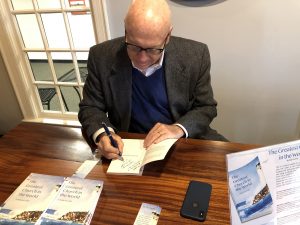
“The Greatest Church in the World” is spreading through Rocky Mount and expanding its reach across city and state lines. It is available on Amazon, a platform with international shipping. However, it is also available at many local businesses, such as The Bath Place, Almand’s Drug Store (Westridge location) and Morning Addiction Coffee House.
The intimate setting of the local coffee shop made the event feel especially communal. I was surprised and pleased with the number of folks who came out to the signing. There were old friends and folks I had never met until that day. It was a great experience and we also had a chance to support a local business, Trax Coffee Bar, which hosted the event.
As this book grows in influence and its principles spread throughout the country, I will not forget its grassroots foundation. Thank you to the Rocky Mount community for giving this project wings.
For up-to-date information on book events, visit facebook.com/skipcarneyauthor.
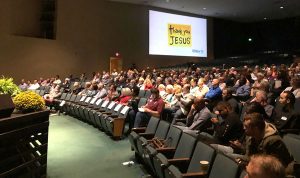
Skip recently spoke at the ReNew 18 Pastors Conference at NC Wesleyan College on Oct 18th. Many pastors from all across NC came out to enjoy great speakers such as Thom Rainer and others. Looking forward to next year’s event.
If you want to start a revolution at your next staff meeting, grab a marker, stand up, and announce, “Okay everyone, we’re going to be innovative today. We’re getting outside the box and we’re gonna do some brainstorming for the next hour!” In their minds, your team members will be grabbing pitchforks, throwing darts, rolling their eyes, and wishing they were in a dentist’s chair rather than your conference room.
Nothing strikes fear into the minds of men and women like the words “let’s brainstorm”.
 Last time, we reviewed how, when I built a wooden kayak, I realized that building a boat and building a brand have a lot in common. You have to have vision, plans, patience, control, and it really helps to be innovative while you’re at it. There are other similarities and there was ONE big one that surprised me.
Last time, we reviewed how, when I built a wooden kayak, I realized that building a boat and building a brand have a lot in common. You have to have vision, plans, patience, control, and it really helps to be innovative while you’re at it. There are other similarities and there was ONE big one that surprised me.

Twinkle. A Chesapeake 17 Sea Kayak.
I’ve been building brands for over 35 years. Last year I did something new. I built a boat. A Chesapeake 17 Sea Kayak by #CLCBoats, made of marine plywood, epoxy, fiberglass, and time. It took about three months and I learned a lot about woodworking along the way.
I also learned that building a boat is a lot like building a brand.
Getting “outside the box” is a lot easier than you think. Here are some great tips.
When speaking to groups on innovation and creativity, I always ask the question, “Are you creative?” Typically, about 25 will say “Yes”.
Here’s a little known fact:
Everyone is creative.

Yes. That includes you. You were born creative. You were born to create. If you think otherwise, stay tuned. NASA developed a test for creativity in the 60’s (the 1960’s). They have tested thousands of people of all ages and here is what they have found:
At age five, 98 of us are creative. Sadly, by age 25, only 5 are still “creative”. What happens during those 20 years? Inhibitions, fears, unlearning our creativity, the “right” answer syndrome? Yes.
Fact is, the creative genes we were born with are not gone. They didn’t disappear. They’ve just been repressed and hidden behind walls of “rational” thinking, limits, and can’t do attitudes. After years of education that says there is only one right answer, after years of being ridiculed for thinking “different” or outside the box, it’s easy to start thinking you are not creative. Part of the problem is the definition of creativity.
What is creativity anyway?

We tend to think of artists, musicians and inventors as the “creative” ones… probably because they start outside the box and rarely go inside. Truth is, creativity comes in many forms and in all types of people.
It’s a process. Really.
Creativity is the process of identifying a problem, studying the facts, identifying potential solutions, then planning and implementing a solution. Only one of those steps is what we traditionally call “creative” but without the other steps, (and the people that drive them) there would be no creativity. As Confuscious said, “To know and not do is to not know.”
There are four problem solving styles: Transformers – these are the folks that transform problems into ideas. Examiners – the folks that like to study, research, and contemplate ideas. Architects – planners, schedulers and organizers. Movers – the doers, the action figures. Together, they form an IDEA TEAM.
It takes a T.E.A.M.

Individually, it’s easy to spin our wheels, hesitate, lack direction. Together, problems get solved. Creativity is realized. Whether you think you are creative or not, you can play an important role in the creative process. So, (1) recognize your approach to problem solving, (2) build a diverse team that will contribute to the solution, and (3) get to work being creative.
 “To explain. To persuade. To sell.” These phrases are all common in any definition of the “value proposition.” The world has changed Kemosabe, from baby boomers to millennials, the conversation has to change, too. (more…)
“To explain. To persuade. To sell.” These phrases are all common in any definition of the “value proposition.” The world has changed Kemosabe, from baby boomers to millennials, the conversation has to change, too. (more…)
 The Unique Selling Proposition was the golden rule of advertising for decades, and no matter how much lip service is given to the value proposition and other strategies, the mindset of the USP is still there. It’s time to lay it to rest.
The Unique Selling Proposition was the golden rule of advertising for decades, and no matter how much lip service is given to the value proposition and other strategies, the mindset of the USP is still there. It’s time to lay it to rest.
(more…)
I took a quick, very unscientific survey recently. It was a one question survey: When you think of Walmart, do you think of innovation? 100 of the answers were the same… “no”. Walmart is just a big ol’ store with lots of stuff at low prices. No innovation, right? Think again.



